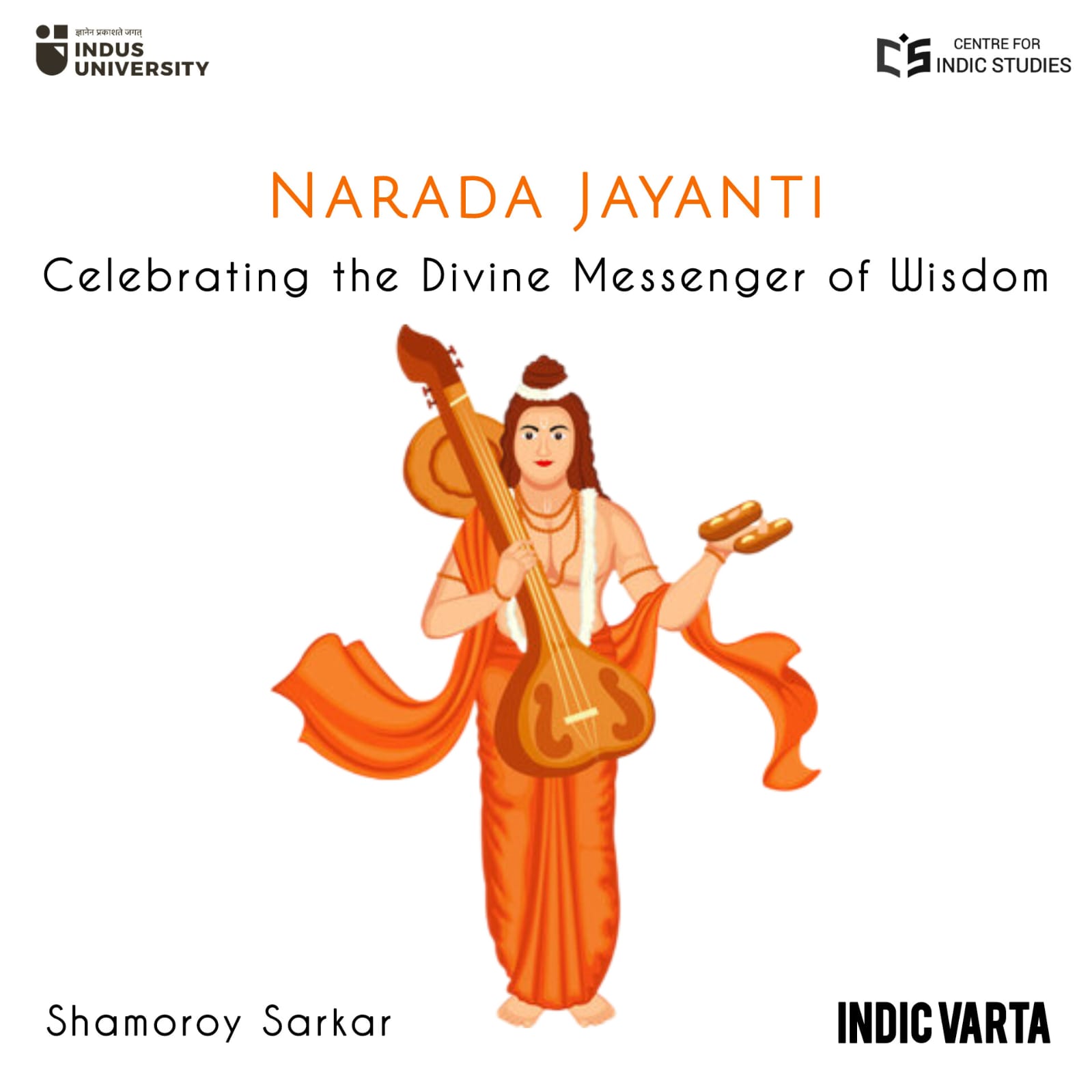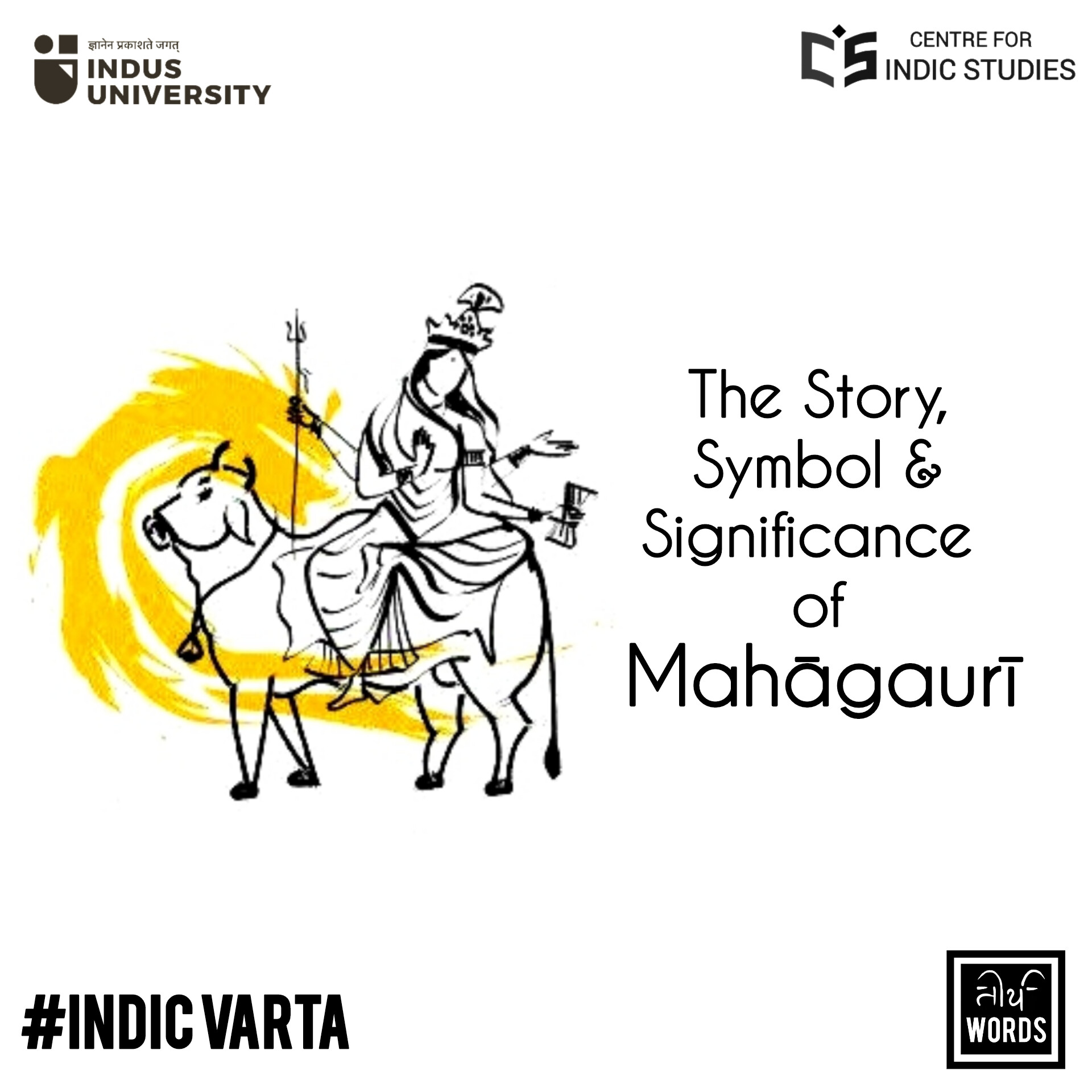- Visitor:22
- Published on: 2025-05-13 05:26 pm
Narada Jayanti: Celebrating the Divine Messenger of Wisdom
In the digital age, Narada Jayanti has gained relevance as a celebration of responsible communication. With the rise of misinformation and sensationalism, Narada Muni’s legacy as a truthful communicator inspires journalists and content creators to uphold integrity. Media houses in India often organize events to mark the occasion, emphasizing the importance of unbiased reporting. Spiritually, Narada Jayanti encourages individuals to reflect on the power of words and their impact on society. Narada’s life teaches that communication should be purposeful, uplifting, and aligned with dharma.

Naradaa Jayanti is a significant Hindu festival that commemorates the birth anniversary of Sage Narada, revered as the divine messenger, celestial sage, and devotee of Lord Vishnu. Celebrated with devotion across India, particularly by those in the fields of communication, journalism, and spirituality, Narada Jayanti holds a unique place in Hindu tradition. This article explores the origins, significance, rituals, and contemporary relevance of Narada Jayanti, delving into the life and contributions of Narada Muni, supported by references from Hindu scriptures and scholarly sources.
Who is Narada Muni?
Narada Muni, often referred to as Devarishi (divine sage), is one of the most enigmatic and revered figures in Hindu mythology. He is a mind-born son of Lord Brahma, the creator, and is celebrated for his wisdom, devotion, and role as a cosmic communicator. Narada is depicted as a wandering sage, carrying a veena (a musical instrument) called Mahati, and is known for chanting "Narayan, Narayan," a mantra dedicated to Lord Vishnu. Narada Muni appears in numerous Hindu scriptures, including the Ramayana, Mahabharata, Bhagavad Gita, and Puranas such as the Bhagavata Purana and Vishnu Purana. His role transcends that of a mere sage; he is a mediator between gods and humans, a disseminator of divine knowledge, and a catalyst for significant events in the cosmic order. According to the Bhagavata Purana (Canto 1, Chapter 5), Narada’s teachings to Vyasa inspired the compilation of the Srimad Bhagavatam, one of the most sacred texts in Vaishnavism. Narada is also known for his mischievous yet purposeful interventions, often stirring events to ensure the triumph of dharma (righteousness). His life exemplifies the ideals of devotion (bhakti), knowledge (jnana), and selfless service.
The Significance of Narada Jayanti
Narada Jayanti is celebrated on the first day of the waxing moon (Krishna Paksha Pratipada) in the Hindu month of Jyestha (May). The festival holds spiritual and cultural importance for several reasons:
1. Celebration of Communication and Wisdom: Narada Muni is considered the patron of communicators, journalists, and storytellers. His ability to convey divine messages across realms makes him a symbol of effective and truthful communication. In modern times, Narada Jayanti is observed by media professionals and writers who seek his blessings for ethical journalism.
2. Devotion to Lord Vishnu: As an ardent devotee of Lord Vishnu, Narada’s life inspires devotees to cultivate unwavering devotion. His constant chanting of Vishnu’s name underscores the power of nama japa (repetitive chanting of God’s name) in spiritual practice.
3. Cosmic Harmony: Narada’s interventions in mythological narratives, such as facilitating the marriage of Lord Rama and Sita or guiding the events of the Mahabharata, highlight his role in maintaining cosmic balance. Narada Jayanti reminds devotees of the importance of aligning personal actions with divine will.
4. Inspiration for Wanderers and Seekers: Narada’s nomadic lifestyle and pursuit of knowledge resonate with spiritual seekers. His life encourages detachment from material possessions and dedication to higher truths.
Historical and Scriptural Context
The origins of Narada Jayanti are rooted in Hindu scriptures, particularly the Puranas. According to the Brahma Purana, Narada was born from the mind of Lord Brahma to assist in the dissemination of divine knowledge. The Bhagavata Purana elaborates on his spiritual journey, describing how Narada attained enlightenment through devotion and penance in his previous births. One of the most famous stories about Narada is his transformation from a mortal to a divine sage. In the Bhagavata Purana (Canto 1, Chapter 5–6), Narada narrates his past life as the son of a maidservant. Inspired by sages, he practiced intense devotion and meditation, eventually attaining the status of a celestial being. This narrative underscores the transformative power of bhakti and the accessibility of divinity to all, regardless of social status. Narada’s role as a communicator is evident in episodes like his advice to King Yudhishthira in the Mahabharata or his guidance to Dhruva, a young devotee, in the Vishnu Purana. His interactions with gods, demons, and humans highlight his impartiality and commitment to truth.
Rituals and Observances of Narada Jayanti
Narada Jayanti is observed with simplicity and devotion, reflecting the sage’s ascetic lifestyle. The rituals vary across regions but typically include the following:
1. Puja and Offerings: Devotees set up an altar with an image or idol of Narada Muni, adorned with flowers and sandalwood paste. Offerings include fruits, sweets, and incense. The Vishnu Sahasranama (thousand names of Vishnu) is chanted, as Narada is closely associated with Lord Vishnu.
2. Recitation of Scriptures: Passages from the Bhagavata Purana, Ramayana, or Narada Bhakti Sutra (a text attributed to Narada on the principles of devotion) are recited. These readings emphasize Narada’s teachings on devotion and selfless service.
3. Chanting and Bhajans: Devotees sing bhajans (devotional songs) dedicated to Narada and Lord Vishnu. The chanting of “Narayan, Narayan” is considered particularly auspicious.
4. Charity and Service: Inspired by Narada’s selfless nature, devotees engage in acts of charity, such as donating food, clothes, or books. Some organize community events to spread spiritual knowledge.
5. Media and Communication Events: In modern times, journalism and media organizations may hold events on Narada Jayanti to honor ethical communication. Workshops, seminars, and awards for truthful reporting are common.
Narada Jayanti in Contemporary Times
In the digital age, Narada Jayanti has gained relevance as a celebration of responsible communication. With the rise of misinformation and sensationalism, Narada Muni’s legacy as a truthful communicator inspires journalists and content creators to uphold integrity. Media houses in India often organize events to mark the occasion, emphasizing the importance of unbiased reporting. Spiritually, Narada Jayanti encourages individuals to reflect on the power of words and their impact on society. Narada’s life teaches that communication should be purposeful, uplifting, and aligned with dharma. Temples dedicated to Narada, such as the Narada Temple in Chigateri, Karnataka, witness large gatherings of devotees during the festival. The festival also resonates with musicians and artists, as Narada is credited with inventing the veena and contributing to the development of Indian classical music. Music schools and cultural organizations may hold performances to honor his legacy.
Narada Muni’s Teachings: The Narada Bhakti Sutra
One of Narada’s most enduring contributions is the Narada Bhakti Sutra, a concise text of 84 aphorisms that outline the path of devotion. The text emphasizes that true devotion is selfless, unconditional, and transcends worldly desires. Key teachings include:
1. Supreme Love for God: Devotion is the highest form of love, surpassing all other attachments (Sutra 2).
2. Surrender to the Divine: True devotees surrender their ego and actions to God (Sutra 25).
3. Company of the Holy: Associating with saints and devotees purifies the mind (Sutra 39).
4. Detachment from Materialism: Devotion requires renunciation of worldly cravings (Sutra 10).
These teachings remain relevant, guiding devotees toward a life of humility, compassion, and spiritual focus.
Challenges and Misconceptions
Narada Muni is sometimes misunderstood as a troublemaker due to his role in stirring events, such as instigating conflicts in mythological stories. However, scholars clarify that his actions were always in service of dharma, designed to bring about divine outcomes. For instance, in the Ramayana, Narada’s curse on Vishnu led to the incarnation of Lord Rama, fulfilling a divine purpose. Another challenge is the limited awareness of Narada Jayanti compared to festivals like Diwali or Holi. Efforts by spiritual organizations and media houses aim to raise awareness, but the festival remains more prominent in specific communities, such as Vaishnavites and journalists.
Conclusion
Narada Jayanti is a celebration of wisdom, devotion, and the power of communication. Sage Narada’s life and teachings continue to inspire millions, offering timeless lessons on spirituality, ethics, and service. Whether through rituals, charitable acts, or reflection on his teachings, devotees honor Narada Muni as a bridge between the human and divine realms. In an era of rapid information exchange, Narada Jayanti serves as a reminder to communicate with truth, purpose, and compassion. As we celebrate Narada Jayanti, let us invoke the spirit of Narada Muni—chanting “Narayan, Narayan” and striving to align our words and actions with the eternal principles of dharma.
References
1. Bhagavata Purana (Srimad Bhagavatam), translated by A.C. Bhaktivedanta Swami Prabhupada, Bhaktivedanta Book Trust, 1970.
2. Vishnu Purana, translated by H.H. Wilson, Nag Publishers, 1989.
3. Narada Bhakti Sutra, translated by Swami Chinmayananda, Chinmaya Mission, 1990.
4. Ramayana, translated by Robert P. Goldman, Princeton University Press, 1990.
5. Mahabharata, translated by Kisari Mohan Ganguli, Munshiram Manoharlal Publishers, 2000.
6. Swami Sivananda, Lives of Saints, Divine Life Society, 1941.
7. Articles from The Hindu and Times of India on Narada Jayanti celebrations (accessed via web search, May 2025).
- 11 min read
- 0
- 0








 - Updated (1).jpg)

